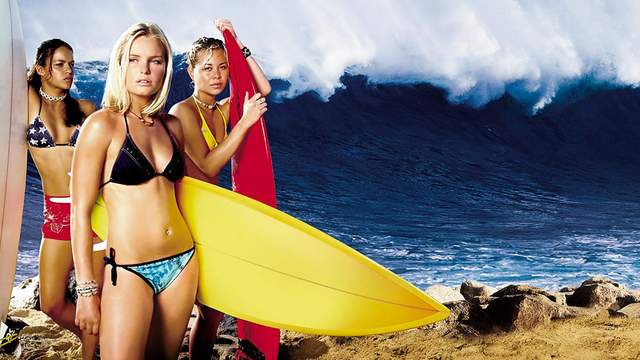Chapter: 8
The Ride of Your Life
- Is Surfing Hip?
- Lisa Andersen Surfs Better Than You
- Killer Cute
- Kelly Slater is Just Warming Up
- Rebel for Hire
- I Believe I Can Fly
- A Monster in Half Moon Bay
- Mark Foo's Last Ride
- Open Throttle
- Laird Means Lord
- Tahitian Scream
- A Webcam for Every Wave
- Last Call for Print Media
- Taylor Steele Likes it Rough
- Searching for the Perfect Phrase
- Hollywood Tries Again
- Thirty is the New Twenty
- Andy Irons' Poetic Fury
- The Beast and Beyond
- A Dance with the Past
- Foam is Dead, Long Live Foam
- Nature Gets a Makeover
- Surf in a Box
- The End of History
Killer Cute

Roxy Girls in Waikiki, around 1996

Roxy teamrider Lisa Andersen, 1998

Atlantic Riders Surf School, Portugal

Blue Crush (2002)
Whatever feminist achievement the Roxy Girl phenomenon represented was narrow at best. It was empowerment by way of Lolita, strained through a hundred marketing meetings, and topped with a plastic lei.
Lisa Andersen’s idea that women's surfing needed a "girly-girl" makeover was a champagne magnum smashing against the bow of Quiksilver’s new Roxy line, which then sailed off to become the flagship for the newest, richest, most sexed-up division of the surf industry. For two or three years, Roxy’s growth was merely steady. Then suddenly it exploded. Yearly revenue shot past $100 million in 1999 and...
Subscribe or Login
Plans start at $5, cancel anytimeTrouble logging-in? Contact us.